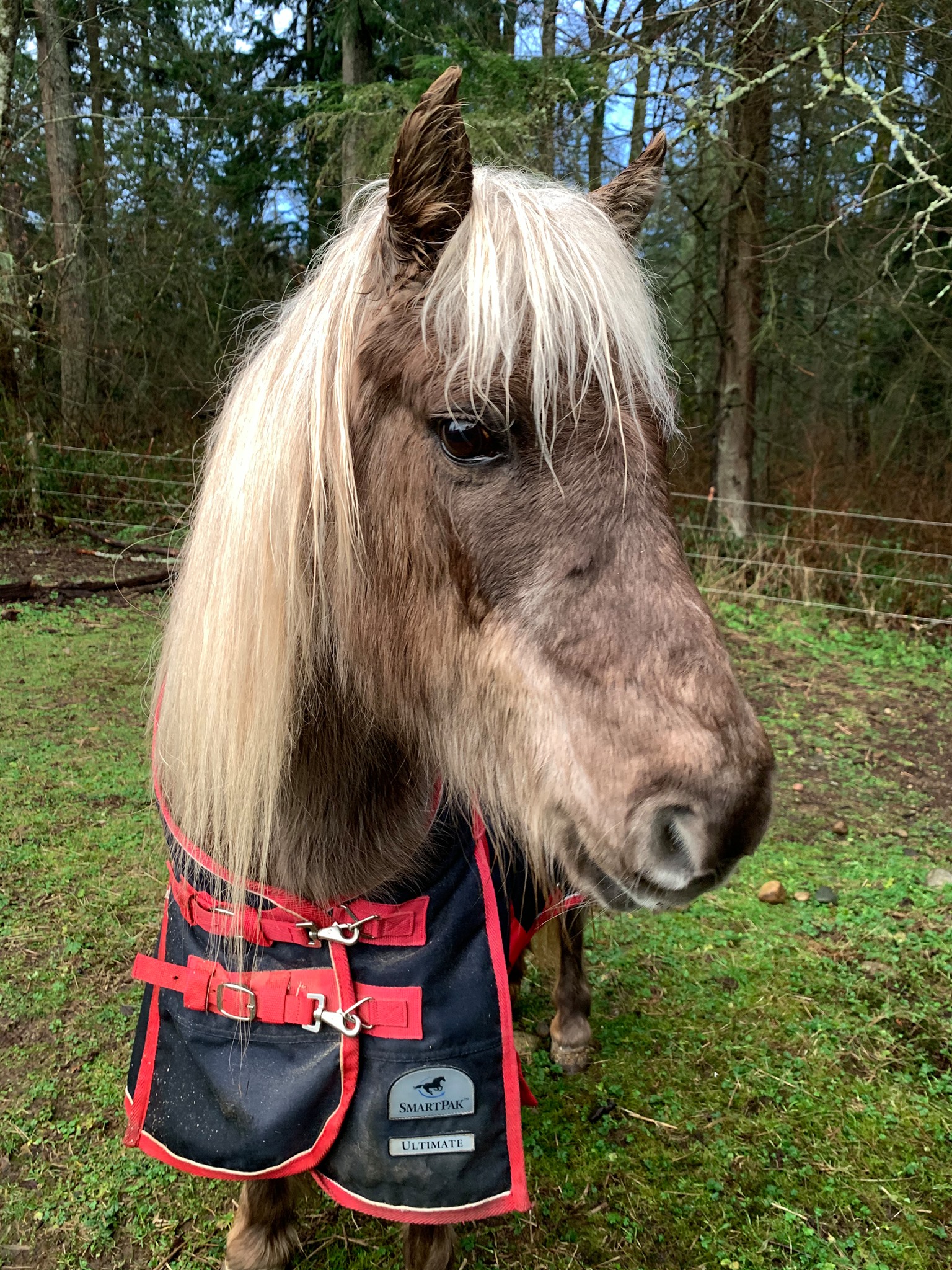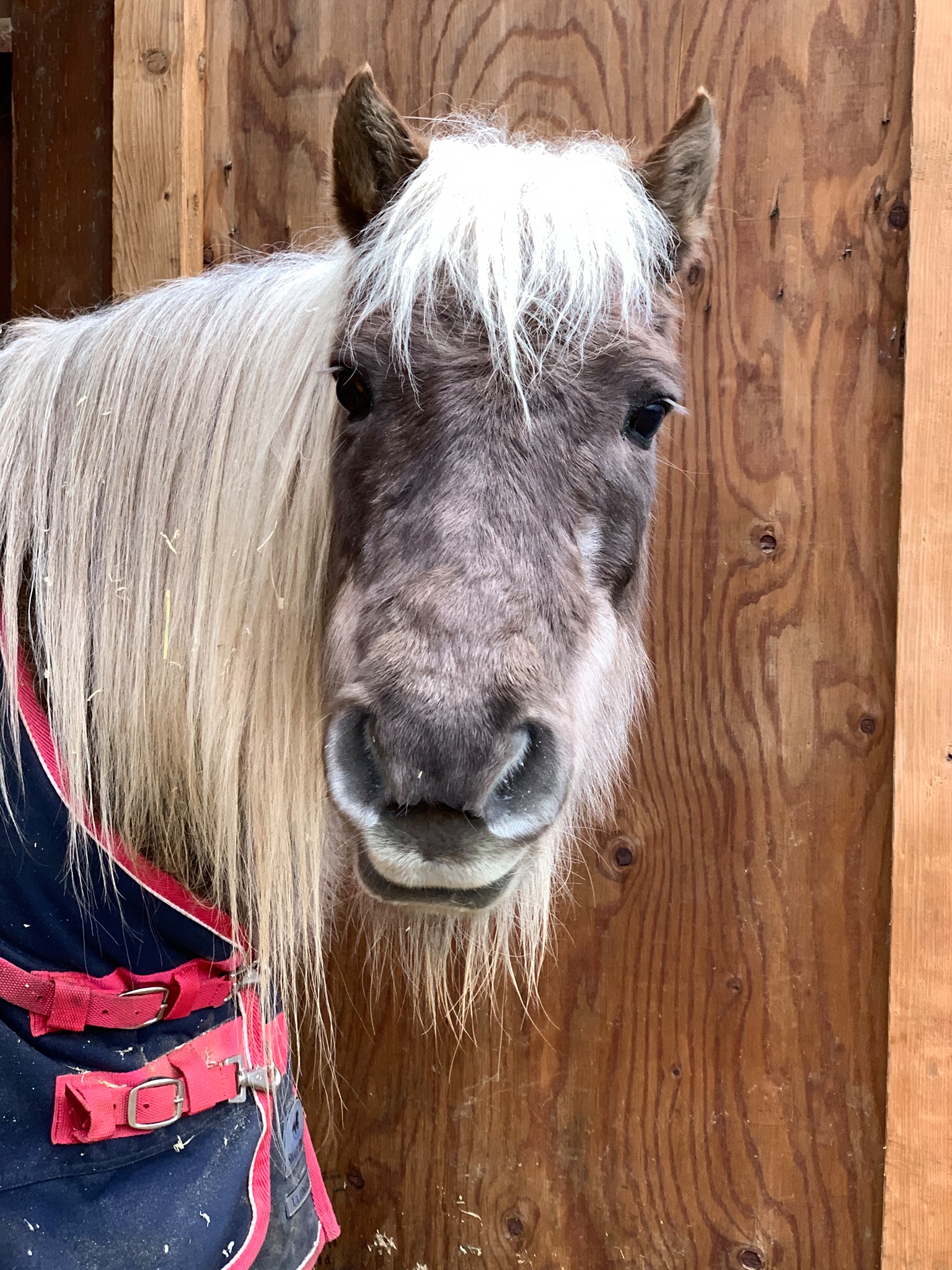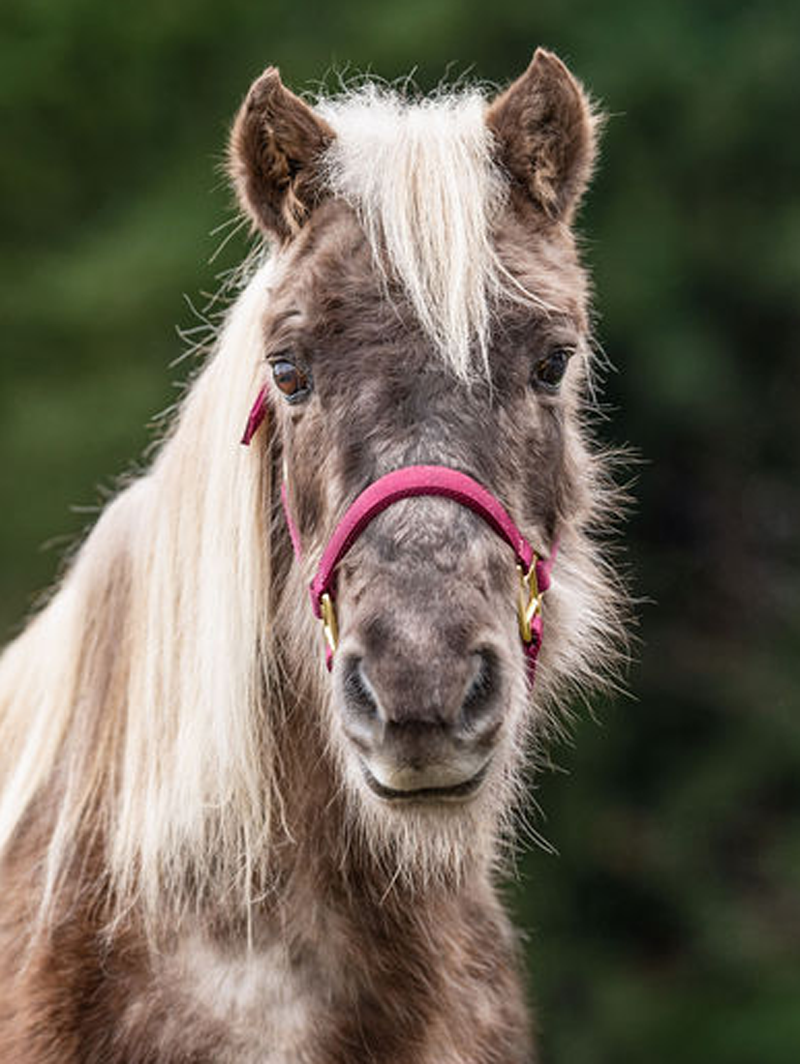Mara
1989 silver dapple Shetland mare
Type of Rescue: Animal Control Seizure
Intake Date: 10/8/2019
Adoption Date: 3/1/2020
Length of Time with SAFE: 5 months
ADOPTED!! by Janelle
Mara and three other horses were seized by Animal Control after being moved from another county to evade law enforcement. These horses were badly neglected, starved, and in desperate need of veterinary care. Sadly, a mare that was seized with this group was humanely euthanized by animal control due to her poor condition. These horses were part of a large herd living together in a barren, overgrazed pasture in King County. They were housed with multiple other horses in a heavily over-grazed paddock, and they were sporadically fed poor quality hay in insufficient amounts. None of the seized horses appear to have been capable of fending off younger and equally hungry horses to get to their food.
Mara is a 30+ year old Shetland pony, who arrived at SAFE with a laundry list of medical issues to get under control, and a lot of weight to gain. But once we got her back on a healthier track, she was ready to find her forever home. When Janelle came looking for a riding horse and found Cameo, the match was perfect! But she needed a companion as well. That’s where Mara came in — the two of them were fast friends, and have been living the dream at Janelle’s house ever since!
After five happy years with Janelle, Mara sadly had to be euthanized due to pneumonia. Rest in peace, Little One!
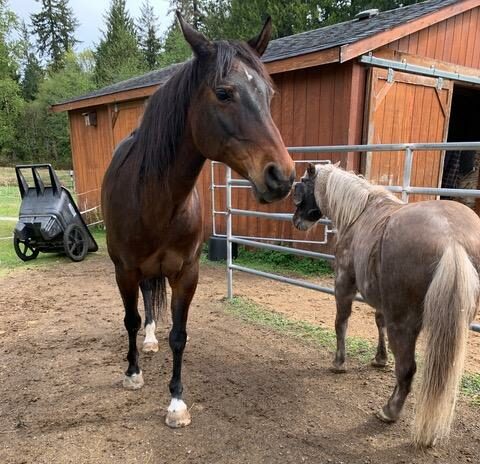
Alumni Update: Cameo and Mara
Cameo and Mara are still BFFs and enjoy going for hand-walks (and rides for Cameo) with Janelle outside of the arena on a path to the Tolt Trail.
SAFE Alumni Update: Cameo and Mara
From Cameo and Mara’s adopter: I have been just terrible about updating on Cameo and Mara and I realized they’ve almost been here a whole year! Such a strange year and time no longer has any meaning but whatever! Anyway they’re doing great! Mara’s eye has been so…
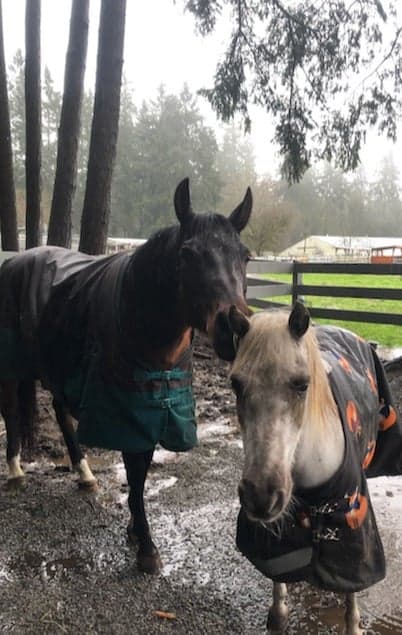
An Unlikely Pair Finds a Forever Home
We meet Janelle a few weeks ago when she came to us, looking for a riding horse to join their family. She met Cameo, and It quickly became clear that Cameo and Janelle were perfect for each other. But since Janelle didn’t own any other horses, we were reluctant to…
The Limelight Pet Project Features Mara
Thanks to The Limelight Pet Project for featuring Mara! The Limelight Pet Project is a campaign local to Washington that shines a light on harder to adopt pets and the people who help them. We’re delighted they chose Mara to share this month on Q13 FOX. Here’s the…
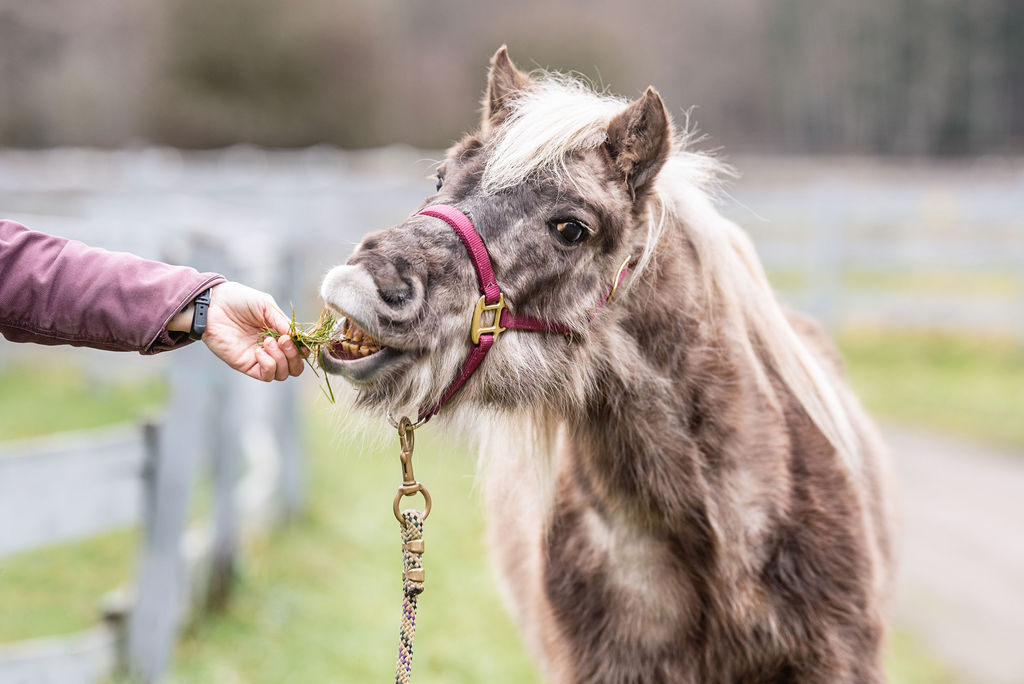
The Problem with Mara’s Eye
A few weeks ago, Mara’s left eye appeared to be hurting. She was squinting, had ocular discharge, and started trying to rub the pain away by scratching her head on the fence post. Dr. Renner from Rainland Farm came out to do an eye exam and found that she had a very…
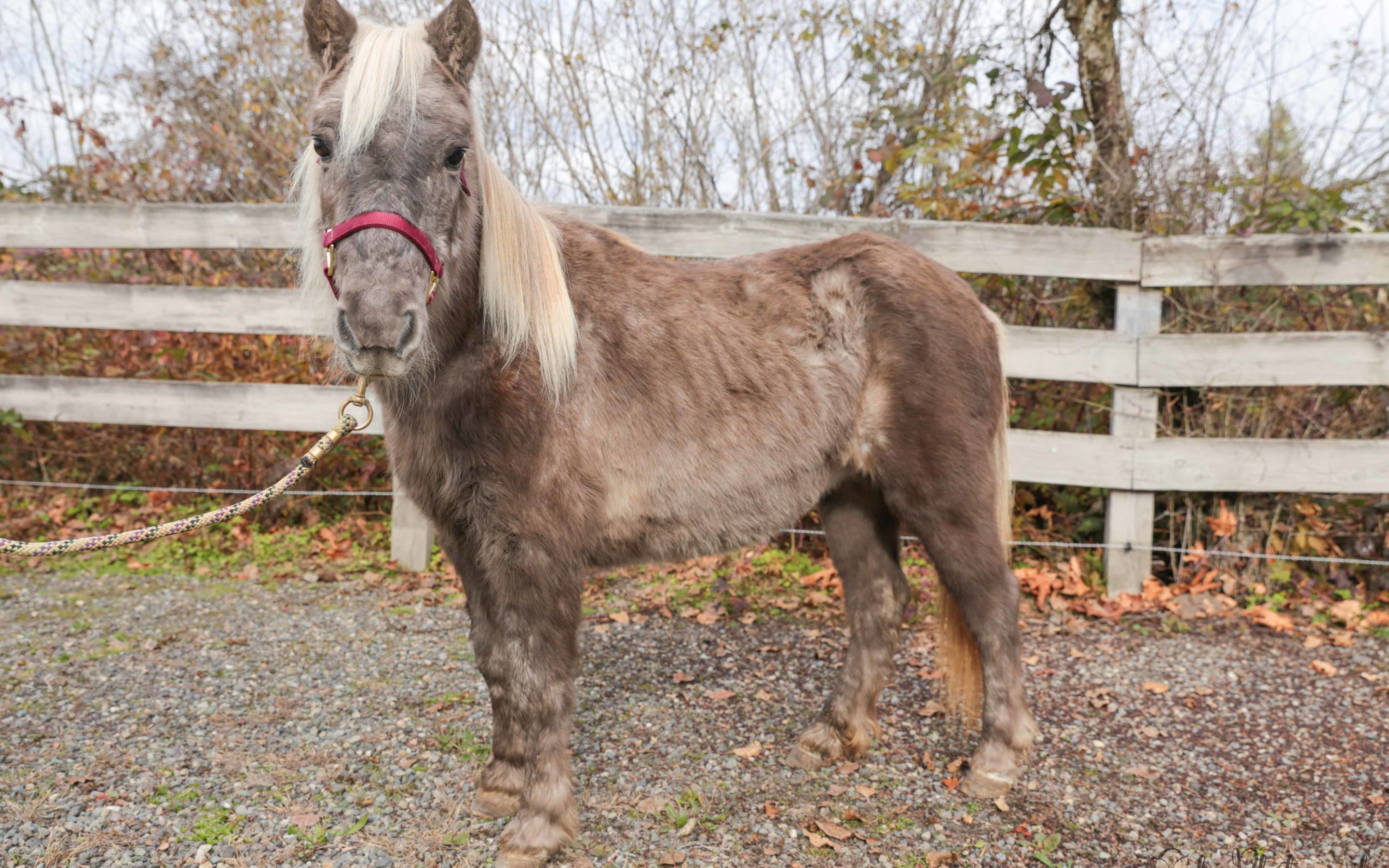
Adorable Miss Mara
Mara is arguably one of SAFE’s cutest current residents. Although she is still reserved, she has begun to come out of her shell and let us get to know her a little better. At first she didn’t want to admit it, but she eventually caved and allowed us to see how much…
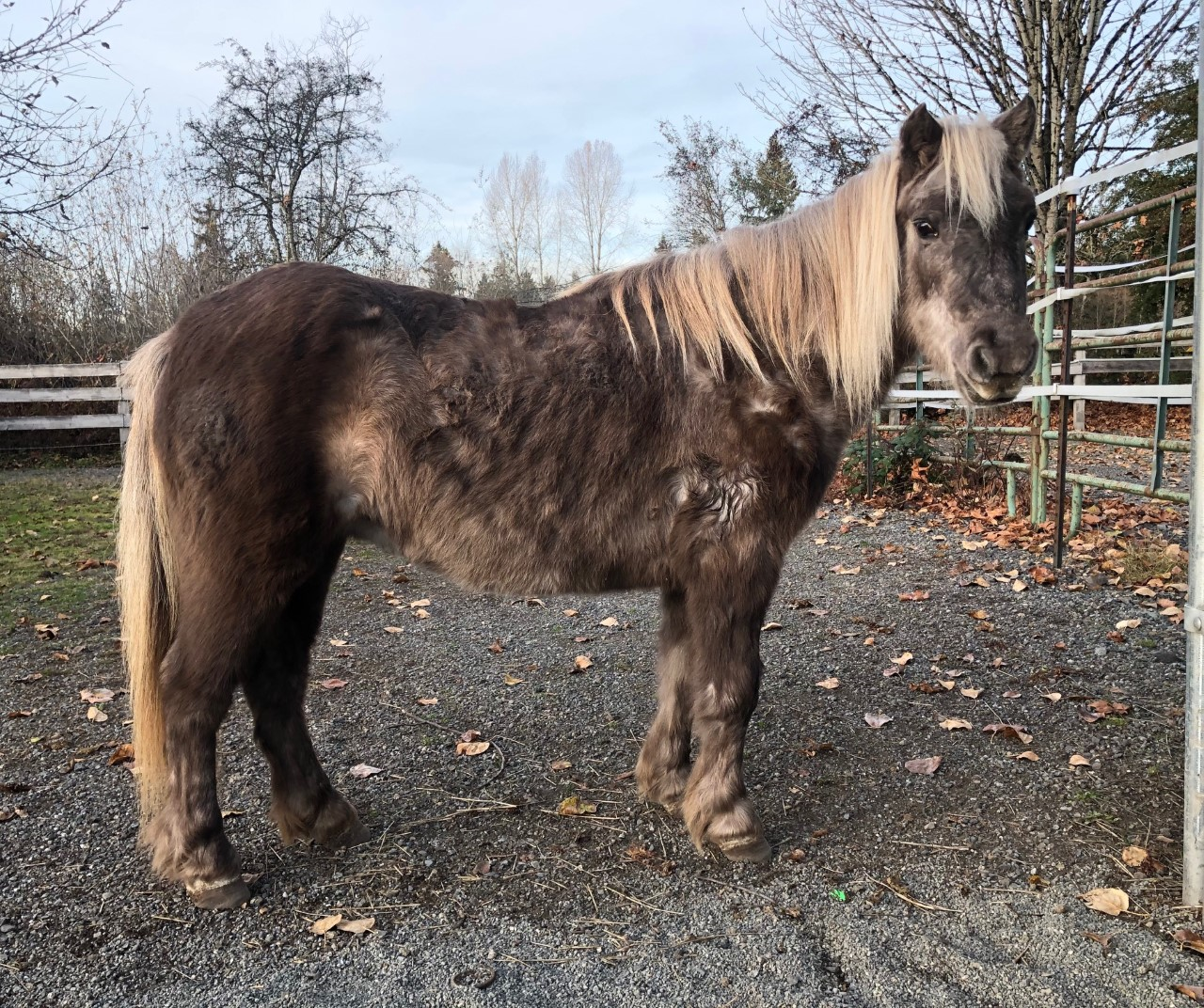
Understanding PPID (Equine Cushing’s Disease)
We’ve taken in several “shaggy” senior horses lately. Honeycutt, Butter, and Mara all came to us looking suspicious for pituitary pars intermedia dysfunction (PPID), and all of them tested positive. Last year, our cute pony, Sage, also got the diagnosis. PPID, also…
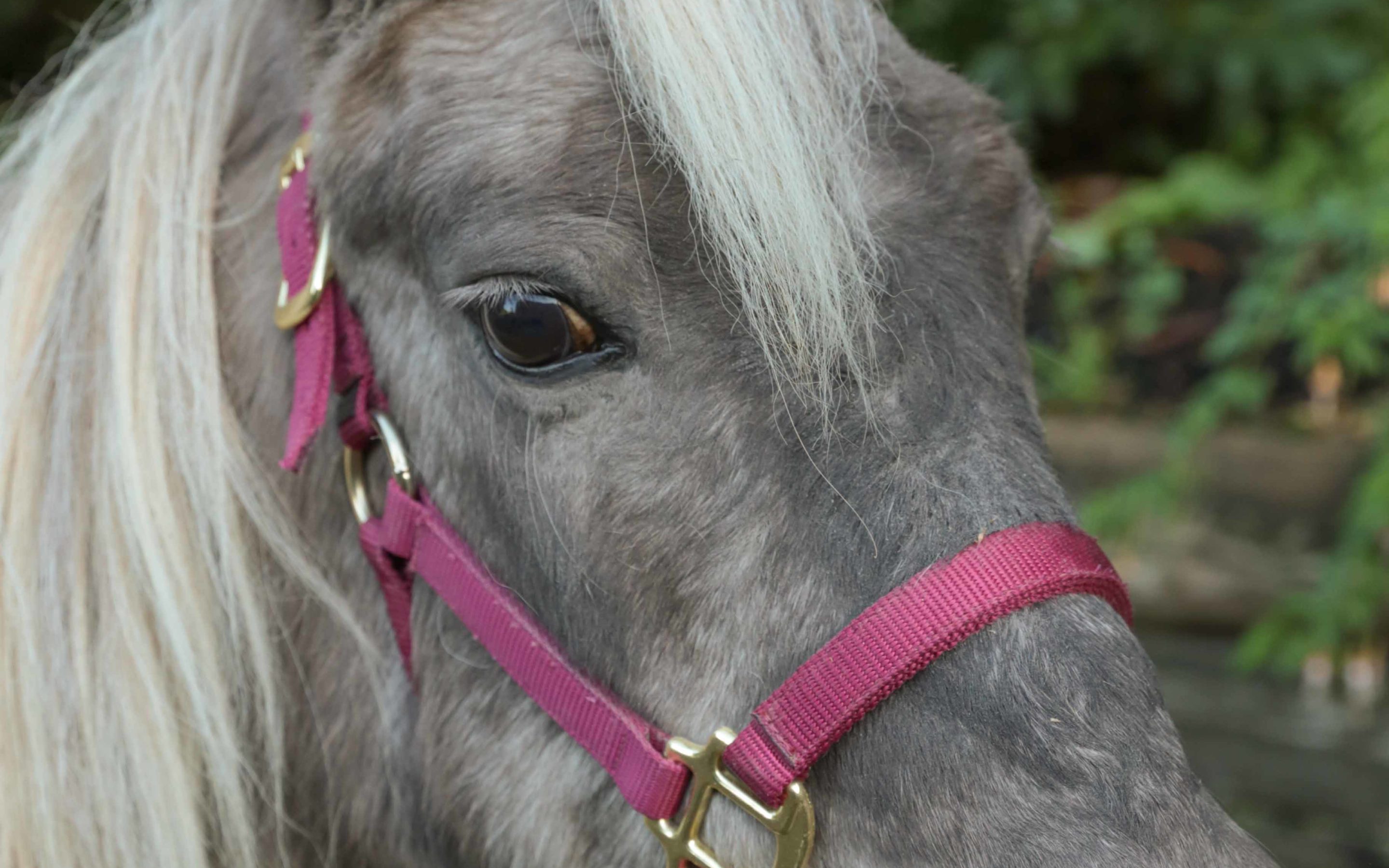
Mara: Intake Photos and Assessments
New horse Mara arrived at SAFE from Animal Control on 10/8. She is a 30-something year old Shetland pony who currently weighs about 450# and stands 10.2hh. She needs to gain about 50 pounds. Mara got a dental, bloodwork, and vaccines through animal control prior to…

Three New Intakes at SAFE
SAFE welcomed three new horses to the herd today. These horses were badly neglected, starved, and in desperate need of veterinary care when they were seized from their owner by Pierce County Animal Control. A fourth horse that was also seized with this group was…

